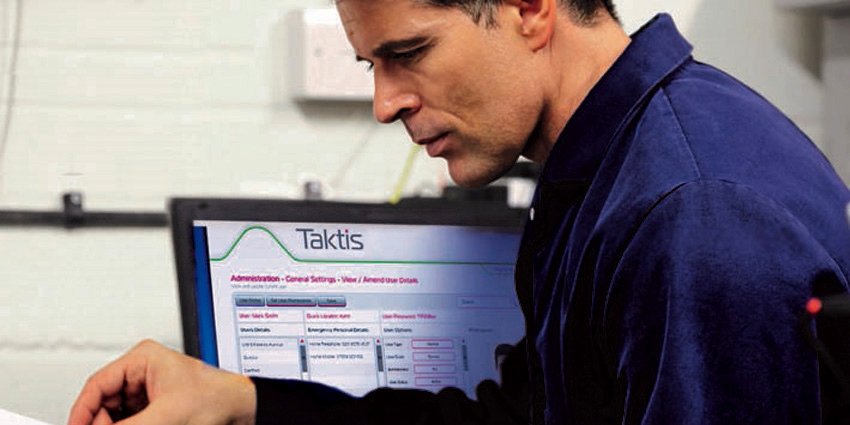A new study reveals that intelligent fire detection systems have the potential to unlock more than 30 percent cost-savings on routine maintenance checks through real-time, data-driven remote monitoring. Kevin Mears, Product Manager for Kentec Electronics, describes how remote monitoring and predictive maintenance can meet the competitive challenges of the digital age.
Leading economists have identified the convergence and synergies delivered by The Internet of Things – the interconnection via the Internet of computing devices embedded in everyday objects, enabling them to send and receive data – as a powerful force to create entirely new business models for system developers and integrators, by releasing the potential of remote interrogation.
Remote Diagnostics: A Cost-Efficient Approach
For the fire systems sector the definition of remote diagnostics is instructive: “Improving the reliability of life-critical installations and reducing maintenance costs by monitoring the condition of the system remotely to obviate unplanned maintenance.” The practical economic value of this data-driven approach to maintenance monitoring is highlighted by the findings by one of the largest global companies specializing in infrastructure solutions. The company found their costs for avoidable maintenance work were just as high, annually, as their actual profit from production: alerting them to seek a fresh rationale to release this massive saving potential.
Intelligent System Operability
So, the message is clear: real value can be created by optimizing predictive maintenance by means of smarter remote troubleshooting, enabled by liberating the interoperability between intelligent systems so their full potential can be realized – and it’s a message that fully applies to an AFD (automatic fire detection and fire alarm system) to the significant benefit of service providers and to end users. The cost of wasted time for both business and the fire service is estimated to be well in excess of £1 billion per year
Specifically, programmed remote diagnostics that discriminatively interrogate an AFD can cut out the need for excessively scheduled maintenance intervals, a measured approach to risk management that harnesses the interconnected intelligence of versatile addressable field devices to deliver an immense reduction of on-site maintenance costs.
Reducing False Alarm Downtime
It’s worth remembering that of the more than 600,000 call out incidents were attended by Fire and Rescue Services, nearly 50 percent of these were due to false fire alarms. The cost of this wasted time for both business and the fire service is estimated to be well in excess of £1 billion per year, and that includes downtime from needless evacuations.
Clearly, such preventable emergency alerts can be sensibly reduced by the use of intelligent predictive technology, reducing the need for fire risk professionals to travel to monitored sites by allowing potential problems to be resolved before they arise.
To tackle this menace of false activations, one of the leading innovators in the fire safety market has now devised an entirely new future-proof management platform that fully exploits internet-enabled technology to establish a new concept in Life Safety System performance, designed to add value to system designer, integrator, service provider and the end user.
Customizable Fire Detection Control
Entering the market as a new concept in fire detection control equipment, this life safety technology brings a new approach to system annunciation made possible by onscreen virtualization of any life safety system via fire alarm system repeater panels, augmented by configurable, application-specific annunciator panels (such as nurses stations, sprinkler indicators, lift alarms, etc.), supported by an easy-to-configure modularity of software that makes any project customizable.
 |
| The technology is designed to yield the key benefits bestowed by the virtualization of remote monitoring |
Foremost, the system combines the efficiency of high-integrity fire data communications – whose performance to minimize false activations is defined by the highest reliability in resistance to outside interference – with a touchscreen-accessible configurable network whose high performance is measured by compliance with BS EN standards for control and indicating equipment, power supply equipment, and system components compatibility.
At its core, this capability incorporates the latest hardware and software to deliver a system that fulfills the precautionary measures most frequently demanded by integrators and contractors. These include the management of fire and security servicing inspection routines, false fire alarm interrogation and diagnosis, or the scheduling of system maintenance call-outs. At the same time, this capability benefits users with the support of a full audit trail for traceability and regulatory compliance. Sophisticated network analysis tools, in addition, provide the ability to identify connection problems instantly.
Fire Management: A New Dimension
This internet-enabled resource permits information to flow according to the needs of each interface, and to match specific supervisory structures; for example, from the restricted entry-level user, through facilities management, to the maintenance engineer.
Individual logins grant individual levels of access. This means that the intuitive touchscreen repeater screens are an easy-to-operate entry-point for those with specific safety duties in a fire zone. These screens can be programmed to ensure restricted users receive on-screen information relating only to their preordained tasks, which communicates clearly so they comprehend quickly and respond without panic. Cloud notifications are accessed 24/7 for online monitoring via users’ smartphones, tablets and other digital devices
For more complex system demands, at the unrestricted level of engineer or building manager, for instance, these utilities permit layer upon layer of operating data to be retrieved for reliable incident reports. By drilling down, through the menu-driven interactions, management can review system event logs, conduct tests, change emergency notification, check trouble signals, disable the system, manage inspections and callouts, and improve servicing and maintenance regimes.
Cloud notifications are accessed 24/7 for online monitoring via users’ smartphones, tablets, and other digital devices, ensuring full system event activity reporting, including multiple sites, false alarm diagnostics and functional testing of system devices. In addition, traceability for site compliance is delivered to benefit users with a full audit trail for regulatory conformance – including operational and performance records to register maintenance routines and all mandatory periodical tests are completed, with full confidentiality of all data.
Virtuality: The New Reality Of Predictive Analytics
The technology described here is designed to yield the key benefits bestowed by the virtualization of remote monitoring:
1. To permit businesses to monitor status of devices in the field for maintenance or upgrade
2. To reduce downtime and improves network efficiencies when coupled with predictive analytics
3. To reduce servicing costs by enhancing maintenance regimes
4. To enable system integrators to harvest operational data and apply these insights to customise user services that build and retain customer loyalty
5. To deliver an operational and performance record for compliance and traceability.
Learn why leading casinos are upgrading to smarter, faster, and more compliant systems




























